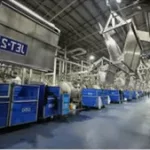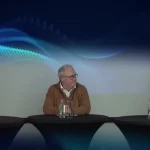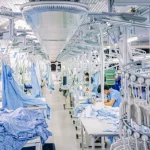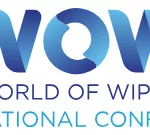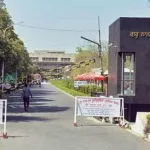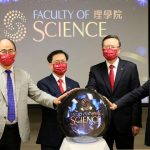Veeresh Mudnoor (vmudnoor.tx008@gmail.com), and
Prof. S. K. Laga (swapan.laga@gmail.com)
D.K.T.E.’s Textile & Engineering Institute, Ichalkaranji – 416115
Medical textile is an important product category within technical textiles. Technical textiles are non-commodity textiles which are predominantly used in non-apparel applications such automotive textiles, medical textiles, geotextiles, sport textiles, to name a few. Even in this tighter economy, technical textile is a fast growing one. According to recent report by US-based Industrial Fabric Association International (IFAI), the specialty fabric industry expected to grow about 2.5%. Jeff Rasmussen, IFAI’s market research manager opines that with the global GDP growth edging towards 4%, the specialty fabric industry is expected to maintain a growth rate of about 2.5%.
Most recently, a UK based Textile Media Services has estimated the global value for technical textiles to be about US$127.2 billion. More importantly, in 2010, China consumed technical textiles worth about US$29 billion. Besides, India is projected to have a double-digit growth of over 15% per annum in technical textiles sector.
A recent report by the Associated Chambers of Commerce and Industry of India has estimated the market size to about US$20 billion. The government of India is also supporting the growth of technical textiles sector in India by creating a National Technological Mission on Technical Textiles (NTMT) with a budget outlay of US$40 billion, and medical textile is an important part of this NTMT. To promote the growth of medical textiles in India, the government has established a Center of Excellence in medical textiles at the South India Textile Association located in the textile city, Coimbatore, in Southern India.
Medical Textile – Introduction
Medical textiles present a wide variety of opportunities for manufacturers and applications for end users. As its name suggests, a medical textile—often used interchangeably with “healthcare textile”—is any textile that provides a medical benefit. These textiles run the gamut: surgical gowns, divider curtains in hospital rooms, antimicrobial upholstery fabrics, adult briefs, gauze, implantable structures, face masks and arm and knee braces. “Any place you want something that’s flexible and strong, a textile is a potential choice,” says Dr. Stephen Michielsen, an associate professor at the College of Textiles at North Carolina State University (NCSU) in Raleigh. Because the demand for cutting-edge products is skyrocketing in the medical field, textile manufacturers continually find ways to improve upon the safety profile of existing products and introduce new medical textiles to the market.
The medical textiles include a vast range of applications, viz, adhesive tapes, bandages, beddings, blankets, castings, diapers, dressings, eye pads, gauzes, protective clothing’s, sutures, surgical covers, surgical clothing’s, swabs, supports, sanitary products, hospital gowns, etc. They also find application in extra-corporeal devices like artificial kidney, liver, heart & mechanical lung, ligaments, vascular grafts, heart valves, blood vessels, artificial skins, etc.
A range of natural fibres and biodegradable polymers with non-biodegradable synthetic polymers is being utilized for developing new products in medical textiles. Since the medical textile applications are directly related to the life of human being, those are required to undergo stringent testing and hygienic criteria, which led to innovative use of variety of fibres and a lot of developments taking place in this area.
Use of nanotechnology, tissue engineering, biomaterials along with basic textile structures, viz, fibres, yarns, woven, knitted, nonwoven and braided fabrics and composite structures made it possible to widen the horizon of medical textiles. Especially, innovations in nonwovens have brought a great deal of change in the field of Medicals.
Classification of Medical textiles
Medical textiles can be broadly classified into: (a) in vivo and (b) in vitro. In vitro products are commodity/general items whereas: in vivo products have specialty applications and requirements. From requirements and applications point of view, most of the vivo items should be single use products. However, in the case vitro general products, they could be either single use or multiple uses. These products are normally non-sterile items such as hospital drapes and bed linens.
Also based on applications the medical textile can be broadly categorized as follows :
- Personal health care/hygienic products: Bedding, clothing, surgical gowns, cloths, wipes surgical curves, surgical hosiery, diapers, etc.
- Non-implantable material or medical dressings & auxiliaries: Wound dressing, bandage, plasters, gauge, lint wadding, etc.
- Implantable materials: Sutures, vascular grafts, artificial ligaments, and artificial joints.
- Extra corporal devices: Artificial kidneys, liver & lungs, etc. The nonwovens are used for the given applications in different forms.
A special additive to produce Antimicrobial textile
Mainly Medical textiles used with barrier effects that are aimed at :
- preventing contamination of bacteria from patients to employees and vice-versa
- protecting employees from contamination through biological liquids
- protecting the environment
Several anti-microbial additives like silver ions already exist, but their effect can quickly disappear as they are destroyed during washing cycles. Output from a new project could lead to a dramatic reduction in hospital-acquired infections. An additive technology that produces anti-bacterial textiles has been developed by a team of researchers led by Devan Chemicals of Belgium. The anti-bacterial textiles can be used to make a range of hospital products such as bed sheets, nurses’ uniforms, pillow cases, other hospital textile products.
Devan’s project is aimed to develop longer-lasting anti-microbial textiles for use in hospitals as they are resistant to microbial attack, and can withstand multiple industrial washing cycles at 80°C. The project’s aim was to cut down on hospital-acquired infections, of which around one-sixth are picked up from textiles. The partners made and tested several textile formulations that incorporated two of Devan’s proprietary molecules: Aegis, a quaternary silane anti-bacterial treatment; and Nanolink, a polymer ‘pre-coat’ that helps to stick the Aegis molecules to the surface.
Aegis offers the advantages of killing several bacteria types, but does not migrate from the surface. Nanolink improves the way that the Aegis molecules stick to the fiber, and helps achieve many wash cycles without losing the anti-microbial effect. Aegis can also keep dust mites at bay, by killing the yeast that they feed on.
The sheets, made from a 50/50 mix of cotton and polyester, were trialed at a hospital in France, while the uniforms were trialed at a hospital in Italy. The Pasteur Institute in Lille tested both for bacterial growth. The treated sheets were found to reduce bacteria by at least 80% even after 50 washes. A similar effect was seen for the uniforms. Devan was one of 44 partners taking part in Flexifunbar, an Euros 11 mln, four-year project set up to develop flexible materials that combined at least two properties – such as flame retardancy, thermal and sound insulation and protection against UV, bacteria and odours. Target applications were identified in building, transport, health and personal protection. The project was instigated by the textiles industry, in order to develop ‘added value’ products that could compete against cheaper imported materials. The researchers hoped to combine several functions into a single material by altering its micro- or nano-structure.
Medical textiles produced for optimum performance
Regardless of their end use, medical textiles need to incorporate a multitude of characteristics to help them perform. Cleanliness of facilities and materials is another important factor in producing quality medical textiles. Furthermore, many medical device manufacturers are racing to incorporate antimicrobial properties into their products. An antimicrobial is any substance that inhibits the growth of microorganisms such as bacteria, viruses and fungi – a primary goal in any clinical setting. Like many textiles across a variety of industries, manufacturers are incorporating green properties into their medical textiles. Standard Textile’s efforts are focused on reducing the environmental impact of all the products.
The root of a medical textile’s performance, of course, is often found in the fibers used to create the product. Secant, for one, uses a variety of textiles, including polyesters and polypropylene, in addition to making fabrics out of absorbable polymers. In tandem with understanding the fibers themselves, a manufacturer also needs to understand their full potential [1].
Researchers’ advancement to improve and create antimicrobial based medical textiles
Creating a new medical textile or improving upon existing technology often involves integrating the right mix of research, marketability and innovation. Following are the some researches which are carried out in the field of medical textiles.
Thomsan Research Associates markets a range of antimicrobials under the trade name Ultrafresh for the textile and polymer industry. Ultrafresh products were developed to be used in normal textile processes. Most Ultrafresh treatments are non-ionic and are compatible with a wide range of binders and finishes. To incorporate antibacterial into high temperature fibres like polyester and nylon, it is necessary to use an inorganic antimicrobial like Ultrafresh CA-16 or PA-42. These must be added as a special master batch to the polymer mixture before the extrusion process.
For fibres such as polypropylene which are extruded at lower temperatures, it is possible to use organic antimi-crobials such as Ultrafresh Nm-100, Dm-50 or XQ-32 [2].
In the case of Rossari’s Fabshield with AEGIS microbe shield programme, the cell membrane of the bacteria gets ruptured when the microbes come in contact with the treated surface. Thus, preventing consumption of antimicrobial over a period of time and remain functional throughout the life of the product. The active substance 3-Trimethoxy silyl propyldimethyl octadecyl ammonium chloride gets attached to the substrate either through bond formation on the surface or by micropolymersing and forming a layer on the treated surface; the antimicrobial agent disrupts the cell membrane of the microbes through physical and ionic phenomena [3].
Ciba Specialty Chemicals markets Tinosan AM 110 as a durable antimicrobial agent for textiles made of polyester and polyamide fibres and their blends with cotton, wool or other fibres. Tinosan contains an active antimicrobial (2, 4, 4′-Trichloro-2′ – hydroxyl-dipenylether) which behaves like a colourless disperse dye and can be exhausted at a very high exhaustion rate on to polyester and polyamide fibres when added to the dye bath [4].
Clariant markets the Sanitized range of Sanitized AG, Switzerland for the hygienic finish of both natural and synthetic fibres. The branded Sanitized range functions as a highly effective bacteriostatic and fungistatic finishes and can be applied to textile materials such as ladies hosiery and tights [5].
Actigard finishes from Clariant are used in carpets to combat action of bacteria, house dust mites and mould fungi. Avecia.s Purista-branded products treated with Reputex 20 which is based on poly (hexamethylene) biguanide hydrochloride (PHMB) claimed to possess a low mammalian toxicity and broad spectrum of antimicrobial activity. PHMB is particularly suitable for cotton and cellulosic textiles and can be applied to blends of cotton with polyester and nylon [6].
Yuan Gao and Robin Cranston had studied the recent advances in antimicrobial treatments for textiles. In this study, they revealed the requirements for antimicrobial finishing, qualitative and quantitative evaluations of antimicrobial efficacy, the application methods of antimicrobial agents and some of the most recent developments in antimicrobial treatments of textiles using various active agents such as silver, quaternary ammonium salts, polyhexamethylene biguanide, triclosan, chitosan, dyes and regenerable N-halamine compounds and peroxyacids [7].
Kimiran Erdem, A., et al, evaluated the antimicrobial activity of fabrics functionalized with dimethlytetradecyl (3-trimethoxysilyl) ammonium chloride. They were used polyester/cotton (38% polyester- 62%cotton) blended fabric, the antimicrobial effect of fabrics was determined by EN ISO 20645:2004 (ager diffusion plate test) and AATTC Test Method 147-2004 (parallel streak method) against Staphylococcus aureus, Escherichia coli and Klebsiella pneumoniae bacteria, and also after 5, 10 and 20 wash cycles against S-aureus. They concluded that the most susceptible bacterium was S-aureus in all standard test methods for unwashed fabrics, antibacterial activity was continued by decreasing even after washing cycles. Unwashed antimicrobial swatches provided 98% decreased for recoverable Saureus in 1hr. contact time [8].
Parikh, D. V., et al, had studied the antimicrobial Ag/Na carboxymethyl cotton burn dressings, were developed by partial cation exchange of sodium by silver from sodium carboxymethyl cotton gauze/nonwovens through treatment with silver nitrate in an 85/15 ethanol/water medium and they were concluded that an enhanced burn treatment was possible using a highly moisture retentive sodium carboxy-methyl gauze instead of conventional gauze could be used with silver nitrate.
The carboxymethyl gauze’s capacity to hold a large amount of antimicrobial solution was created the possibility for better antimicrobial treatment. From the behavior of antimicrobial release and the suppression of bacterial and fungal proliferation, it could be apparent that the dressings containing the silver antimicrobial agent would protect wound surfaces from microbial invasion and effectively suppress bacterial proliferation [9].
Kathirvelu. S., et al, carried out a research work on the Synthesis and characterization of nanosized zinc oxide particles. They were applied ZnO nanoparticles to 100% cotton and polyester/cotton samples to impart anti-bacterial activity to the treated textile. The effectiveness of the treatment was assessed through standardized tests for anti-bacterial activity before and after washing. They concluded that the antibacterial activity performance of ZnO nanoparticles could be efficiently transferred to fabric materials through the application of ZnO nanoparticles on the surface of both woven and knitted cotton and polyester/cotton blended fabrics [10].
Mirjana Kostic, et al, studied the antimicrobial textile prepared by silver deposition on dielectric barrier discharge treated cotton/ polyester fabric. They were carried out a series of the DBD fabric treatments in order to determine the most suitable experimental conditions for the DBD activation of the fabric surface, while the optimal conditions for silver ions sorption by Co/PES fabrics were determined by changing sorption conditions and the obtained results were confirmed that the practicability of the plasma modification process and furthermore it showed that with some delays in the silver ion sorption could increase in the amount of the sorbed silver ions; the maximum sorption capacity of modified Co/PES fabrics was 0.135mmol of Ag+ ions per gram of a fabric [11].
Roman Jantas, and Katarzyna Górna, had studied the antimicrobial finishing of cotton fabrics. In this study, they were given the Antibacterial properties to the surface of a cotton fabric by a two-stage process of chemical modification. First, the fabric was treated with chloroacetyl chloride in Tetrahydrofurane (THF) using pyridine as a catalyst to incorporate chloroacetate groups. During the second stage, the chloroacetylated cotton was reacted with a potassium salt of a bioactive 1-naphthylacetic acid to prepare a cellulose-1-naphthylacetic acid adduct.
They obtained the results in such a way that the existence of a chemical linkage between 1-naphtylacetic acid and the cellulose chains was confirmed. As a result of this modification, the cotton fabric surface becomes hydrophobic, and the fabric thermal stability was decreased. The hydrolysis in the heterogeneous phase of adducts showed that the release of the bioactive compound was dependent on the pH values of the medium [12].
Mahmet Orhan, et al, had carried out a research work on the use of triclosan as antibacterial agent in textiles. In this study, they used 100% single knitted cotton fabric & applied triclosan on cotton fabrics as an antimicrobial agent and studied its durability to repeated home laundering. They were exposed the samples to acidic, basic and synthetic urine solutions as simulated wearing conditions, to evaluate the effects of environmental conditions on activity of triclosan. They concluded that the raw fabrics had the lowest activity and the bleaching pretreatment caused the increase in antimicrobial activity and significant reduction in bacterial growth and showed the best activity, especially against S-aureus, this was due to hydrogen peroxide acts as an oxidant by producing hydroxyl free radicals (OH) which attack essential cell components, including lipids proteins, and DNA. On the other hand Gram negative bacteria, while the repeated home laundering, and acidic, basic and urine conditions negatively affect the activity [13].
Deepti Gupta & Ankur Laha had evaluated the antimicrobial activity of cotton fabric. In this study, they treated cotton fabric with the tannin-rich extract of Quercus Infectoria (QI) plant in combination with alum, copper and ferrous mordants. QI extracts showed good activity at 12% concentration (owf), inhibiting the microbial growth by 45-60%.
The microbial growth inhibition increases to 70-90% when alum and copper sulphate were used for mordanting. However, they got the antimicrobial activity was completely lost when ferrous sulphate was used, that was due to tannin-rich dye QI and the biological activity of tannins was probably affected to a great extent by the molar content and spatial configuration of the o-phenolic hydroxyl groups. They concluded that the cotton textiles could be successfully treated with QI to produce bioactive textiles from natural ecofriendly materials [14].
Sathianarayanan, M. P., et al had studied the antimicrobial finish for cotton fabric from herbal products. They applied herbal extracts from the Ocimum sanctum (tulsi leaf) and rind of Punica granatum (pomegranate) to cotton fabric by the method of direct application, micro-encapsulation, resin cross-linking and also their various combinations.
Antimicrobial activities of the treated fabrics were evaluated by both qualitative (AATCC-147) and quantitative (AATCC-147-1988). Except the method of direct application, all other treatments showed good washing durability up to 15 washes. The surface morphological studied using SEM showed the surface coating, microcapsules & some fibrillations. A small decrease in tensile strength and crease recovery angle was observed for resin treated and micro-encapsulated fabrics respectively. But in combined processes no significant changes were observed [15].
Antimicrobial Substances and Their Effect
Many antimicrobial agents used in the textile industry are known from the food stuff and cosmetics sector. These substances are incorporated with textile substrates comparatively at lower concentrations. It must be ensured that these substances are not only permanently effective but also that they are compatible with skin and the environment.
A wide palette of antimicrobial compounds is now in use but differ in their mode of action. The following list demonstrates the polyvalent effect of the various antimicrobial substances:
Materials with active finishes contain specific active antimicrobial substances, which act upon micro-organisms either on the cell, during the metabolism or within the core substance (genome). However, due to the very specific nature of their effect, it is important to make a clear distinction between antibiotics and other active substances which have abroad range of uses.
Oxidizing agents such as aldehydes, halogens and proxy compounds attack the cell membrane, get into the cytoplasm and affect the enzymes of the microorga-nisms.
Coagulants, primarily alcohols irreversibly denature the protein structures.
Redical formers like halogens, isothiazones and peroxo compounds are highly reactive due to the presence of free electrons. These compounds virtually react with all organic structures in particular oxidizing thiols in amino acids. Even at the lowest level of concentrations, these substances pose particular risk to nucleic acids by triggering mutations and dimerization.
One of the most durable type of antimicrobial products is based on a diphenyl ether (bis-phenyl) derivative known as either 2, 4, 4′-trichloro-2′ hydroxy dipenyl ether or 5-chloro-2-(2, 4-dichloro phenoxyl) phenol. Triclosan products have been used for more than 25 years in hospitals and personal care products such as antimicrobial soap, toothpaste and deodorants.
Triclosan inhibits growth of microorganisms by using a electro chemical mode of action to penetrate and disrupt their cell walls. When the cell walls are penetrated, leackage of metabolites occurs and other cell functions are disabled, thereby preventing the organism from functioning or reproducing. The Triclosan when incorporated within a polymer migrates to the surface, where it is bound. Because, it is not water-soluble, it does not leach out, and it continuously inhibits the growth of bacteria in contact with the surface using barrier or blocking action.
Quaternary ammonium compounds, biguanides, amines and glucopro-tamine show poly cationic, porous and absorbent properties. Fibres finished with these substances bind micro-organisms to their cell membrane and disrupt the lipo poly saccharide structure resulting in the breakdown of the cell. Complexing metallic compounds based on metals like cadmium, silver, copper and mercury cause inhibition of the active enzyme centers (inhibition of metabolism). Amongst these, the silver compounds are very popular and already been used in the preparation of antimicrobial drinking water.
Chitosan is an effective natural antimicrobial agent derived from Chitin, a major component in crustacean shells. Coatings of Chitosan on conventional fibres appear to be the more realistic prospect since; they do not provoke an immunological response. Fibres made from Chitosan are also available in the market place.
Natural herbal products can be used for antimicrobial finishes since; there is a tremendous source of medicinal plants with antimicrobial composition to be the effective candidates in bringing out herbal textiles.
Commercial Antimicrobial Agents and Fibres
Thomsan Research Associates markets a range of antimicrobials under the trade name Ultrafresh. for thetextile and polymer industry. Ultrafresh products were developed to be used in normal textile processes. Most Ultrafresh treatments are non-ionic and are compatible with a wide range of binders and finishes. To incorporate antibacterial into high temperature fibres like polyester and nylon, it is necessary to use an inorganic antimicrobial like Ultrafresh CA-16 or PA-42. These must be added as a special master batch to the polymer mixture before the extrusion process.
For fibres such as polypropylene which are extruded at lower temperatures, it is possible to use organic antimicro-bials such as Ultrafresh Nm-100, Dm-50 or XQ-32. In the case of Rossari’s Fabshield with AEGIS microbe shield programme, the cell membrane of the bacteria gets ruptured when the microbes come in contact with the treated surface. Thus, preventing consumption of antimicrobial over a period of time and remain functional throughout the life of the product. The active substance 3-Trimethoxy silyl propyl dimethyl octadecyl ammonium chloride gets attached to the substrate either through bond formation on the surface or by micropolymersing and forming a layer on the treated surface; the antimicrobial agent disrupts the cell membrane of the microbes through physical and ionic phenomena.
Ciba Speciality Chemicals markets Tinosan AM 110 as a durable antimicrobial agent for textiles made of polyester and polyamide fibres and their blends with cotton, wool or other fibres. Tinosan contains an active antimicrobial (2, 4, 4′- Trichloro-2′ – hydroxyl-dipenylether) which behaves like a colourless disperse dye and can be exhausted at a very high exhaustion rate on to polyester and polyamide fibres when added to the dye bath.
Clariant markets the Sanitized range of Sanitized AG, Switzerland for the hygienic finish of both natural and synthetic fibres. The branded Sanitized range functions as a highly effective bacteriostatic and fungistatic finishes and can be applied to textile materials such as ladies hosiery and tights. Actigard finishes from Clariant are used in carpets to combat action of bacteria, house dust mites and mould fungi.
Avecia’s Purista-branded products treated with Reputex 20 which is based on poly (hexamethylene) biguanide hydrochloride (PHMB) claimed to possess a low mammalian toxicity and broad spectrum of antimicrobial activity. PHMB is particularly suitable for cotton and cellulosic textiles and can be applied to blends of cotton with polyester and nylon. In addition to the aforesaid antimicrobial agents, the fibres derived from synthetic with built-in antimicrobial properties.
Benefits of Antimicrobial Medical Textiles
A wide range textile product is now available for the benefit of the consumer. Initially, the primary objective of the finish was to protect textiles from being affected by microbes particularly fungi. Uniforms, tents, defence textiles and technical textiles, such as, geotextiles have therefore all been finished using antimicrobial agents. Later, the home textiles, such as, curtains coverings, and bath mats came with antimicrobial finish. The application of the finish is now extended to textiles used for outdoor, healthcare sector, sports and leisure.
Novel technologies in antimicrobial finishing are successfully employed in non-woven sector especially in medical textiles. Textile fibres with built-in antimicrobial properties will also serve the purpose alone or in blends with other fibres. Bioactive fibre is a modified form of the finish which includes chemotherapeutics in their structure, ie, synthetic drugs of bactericidal and fungicidal qualities. These fibres are not only used in medicine and health prophylaxis applications but also for manufacturing textile products of daily use and technical textiles.
The field of application of the bioactive fibres includes sanitary materials, dressing materials, surgical threads, materials for filtration of gases and liquids, air conditioning and ventilation, constructional materials, special materials for food industry, pharmaceutical industry, footwear industry, clothing industry, automotive industry etc.
Conclusion
To benefit from the consumer demand for antimicrobial/antibacterial products and for the antibacterial and antifungal performance needs of the textile world, manufacturers have a choice. In choosing, they should utilize a treatment that provides for an odor reduction/antibacterial claim and an antimicrobial finish for their textile products consistent with their claims and the needs of their target consumers.
Acknowledgement
The authors wish to express their sincere thanks to Prof. Dr. P.V. Kadole, Principal and Prof. Dr. A.I. Wasif of Textile & Engineering Institute, India for their inspiration and moral support for carrying out this research work.
References
- O.L. Shanmugsundaram, Antimicrobial Finish in Textiles, The Indian Textile Journal, August 2007.
- Innovative Developments in Antimicrobial Textiles, The Indian Textile Journal, May 2011.
- Antimicrobial Products in Textile Industry, Fiber 2 Fashion.com.
- Ali Elshafei and H.T E-Zanfaly, Applications of the Antimicrobials in the Development of Textiles, Asian Journal of Applied Sciences, 4(6), 585-595, 2011.
- Dr. T. Ramchandran et al, Antimicrobial Textiles- an Overview, IE (I) Journal-TX, May 2004.
- D.Gopalkrishnan and R.K Ashwini, antimicrobial Finishes, Fiber 2 Fashion.com.
- Yuan Gao and Robin Cranston., Recent Advances in Antimicrobial Treatments of Textiles, Textile Research Journal, vol 78, pp 60-72, (2008).
- Kirmiran Erdem, A., and Sanli Yurudu, N. O., The Evaluation of Antimicrobial Activity of Fabrics Impregnated with Dimethyltetradecyl(3-(trimethoxysily) propyl) Ammonium Chloride, IUFS J Biol, vol 67, No.2, pp 115-122, (2008).
- Parikh, D. V., Fink. T., Rajashekharan. K., Sachinvala. N. D., Sawhney. A. P. S., Calamari. T. A., and Ashis. D. Parikh., Antimicrobial Silver/Sodium Carboxymethyl Cotton Dressings for Burn Wounds, Textile Research Journal, vol 75, pp 143-138, (2005).
- Kathirvelu, S., Souza, L. D., and Dhurai, B., Study of Antimicrobial Finishing of Textiles using Zno Nanoparticles, IE(I) Journal-TX, vol 90, pp 16-21, (August 2009).
- Mirjana Kostic., Nina Radic., Bratislav. M. Obradovic., Sujana Demitrijevic., Milorad. M. Kuraika., and Peter Skundric., Antimicrobial textile prepared by silver deposition on Dielectric Barrier Discharge treated cotton/polyester fabric, Chemical Industry and Chemical Engineering Quarterly, vol 14, No.4, pp 219-221, (2008).
- Roman Jantas., and Katarzyna Gorna., Antimicrobial Finishing of Cotton Fabrics, Fibres and Textiles in Eastern Europe, vol 14, No. 1(55), (January/March 2006).
- Mehmet Orhan., Diek Kut., and Cem Gunesoglu., Use of Triclosan as Antimicrobial Agent in Textiles, Indian Journal of Fibre and Textile Research, vol 32, pp 114- 118, (March 2007).
- Deepti Gupta., and Ankur Laha., Antimicrobial Activity of Cotton Fabric Treated with Quercus Infectoria Extact, Indian Journal of Fibre and Textile Research, vol 32, pp 88- 92, (March 2007).
- Sathianarayanan, M. P., Bhat, N. V., Kokate, S. S., and Walunj, V. E., Antimicrobial Finish for Cotton Fabric from Herbal Products, Indian Journal of Fibre and Textile Research, vol 35, pp 50- 58, (March 2010).
